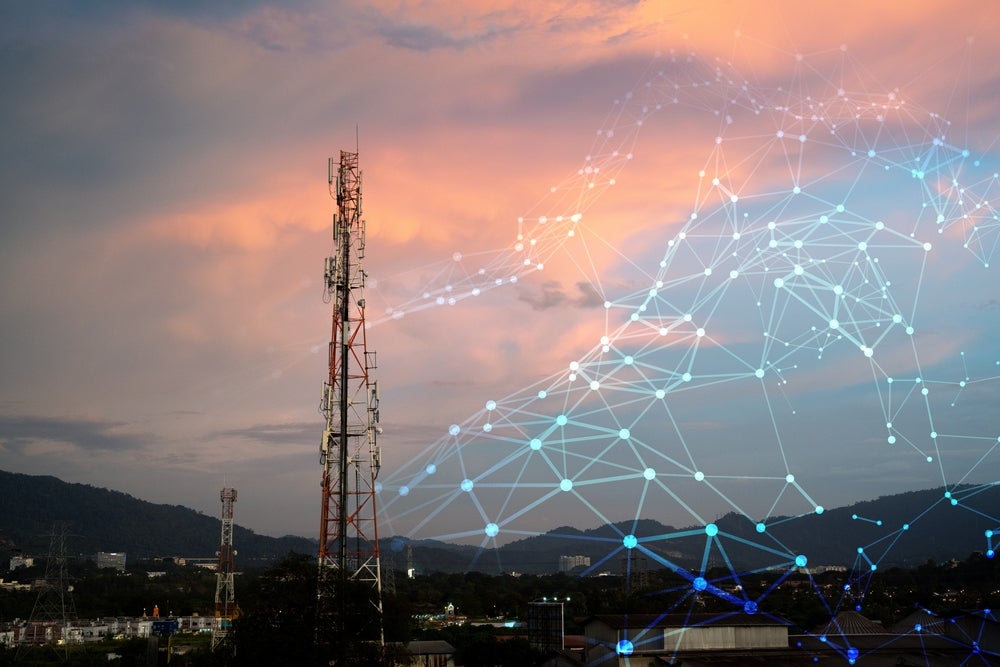
Safety features have become a point of competition between many vehicle manufacturers with product safety goals incorporated into many original equipment manufacturers’ (OEMs) company core values and increased funding dedicated to the innovation and development of advanced safety features.
The IoT-enabled technologies can help OEMs stay competitive and improve road safety features across their vehicle fleets.
What is the Internet of Things (IoT)?
The Internet of Things (IoT) is an umbrella term used to describe the use of connected sensors and actuators to control and monitor the environment, the things that move within it, and the people that act within it. GlobalData forecasts that the global enterprise IoT market will be worth $1.2trn in 2027, having grown at a compound annual growth rate (CAGR) of 15.1% between 2022 and 2027.
The automotive industry has been one the fastest adopters of IoT technologies due to IoT’s interoperability with other technologies such as AI, cloud computing, and robotics. IoT-enabled technologies can help reduce manufacturing and logistics costs, improve driver and road safety, and build smart vehicle-to-infrastructure (V2I).
Smart cities integrate various physical devices connected to a network to optimize the efficiency of urban operations and services. Improvements in vehicle-to-infrastructure connectivity are crucial for smart cities. While smart cities can be achieved without IoT, vehicle-to-infrastructure connectivity is much better when supported by IoT systems.
How IoT can help with road safety
Many vehicle manufacturers have already adopted IoT-enabled connected car services that provide roadside and emergency assistance. However, vehicle safety can also be improved through advanced driver assistance systems (ADAS) technology. Ford’s ADAS system, BlueCruise, uses an infrared camera that tracks head and eye movements to check whether the driver is looking at the road. If the driver glances away for more than five seconds, the system gives the driver a visual and audible warning. If the driver does not return their eyes to the road, the system soon begins to slow the car and contacts emergency services.
How well do you really know your competitors?
Access the most comprehensive Company Profiles on the market, powered by GlobalData. Save hours of research. Gain competitive edge.

Thank you!
Your download email will arrive shortly
Not ready to buy yet? Download a free sample
We are confident about the unique quality of our Company Profiles. However, we want you to make the most beneficial decision for your business, so we offer a free sample that you can download by submitting the below form
By GlobalDataSmart Eye, a Swedish AI company, has gone even further and used IoT and AI to enhance road safety with the unveiling of its new driver monitoring system (DMS). The system deploys a remote, non-contact camera-based technology that uses infrared light to measure variations in light reflection from the skin to estimate the driver’s heart rate and micro-movements to detect subtle changes in breathing patterns and eye movements. An AI algorithm then analyses the physiological signals and feedback to the vehicle.
This new feature helps achieve a more comprehensive understanding of a driver’s health and safety. By continuously monitoring the driver’s physiological signals, the new feature will enable early detection of sudden illnesses or unresponsive behaviour while driving. Smart Eye’s technology is already used by automakers including Audi, BMW, Jaguar, Land Rover, Mercedes-Benz, and Volvo.
Limitations of IoT
Smart city infrastructure will help immensely improve road safety in urban areas. IoT sensors in urban infrastructure, from buildings to sidewalks, traffic lights, and even pedestrians, are crucial to building smart cities. These sensors will also require extremely low latency for real-time connectivity. While this technology is developing quickly with improvements








Related Company Profiles
Mercedes-Benz Group AG
Audi AG
Ford Motor Co